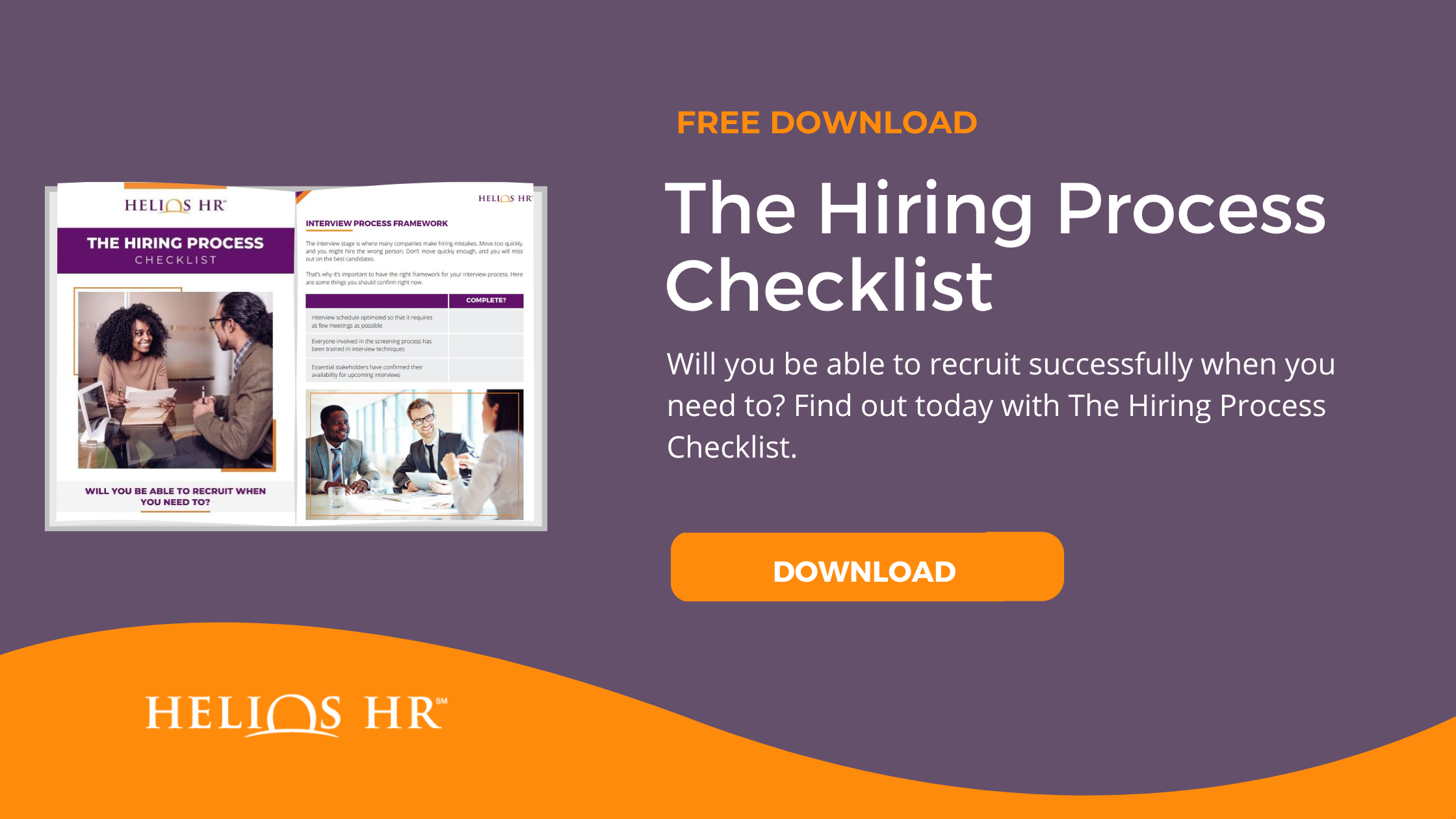By: Paul Davis on February 1st, 2023
How to Attract Candidates for Hot Jobs—at the Right Salary
People often use terms like "employer's market" and "candidate's market" to describe how hard or difficult it is to recruit. But for some people, it is always a candidate's market. These are people qualified for hot jobs: positions where employer demand is greater than the supply of available talent.
Hot jobs are often a headache for employers, for two reasons:
- Either you can't find anyone qualified, or;
- Suitable candidates are demanding a premium salary
While it's a challenge, you should be okay as long as you have the right recruitment strategy. Let's talk about the best way to fill those in-demand positions.
What is a Hot Job?
When I’m working with clients to develop targeted recruiting plans it’s common to encounter positions that require additional planning in order to successfully fill the vacancy. These jobs are those that are in high demand and are often referred to as "hot jobs".
In other words, a job is hot because it can be difficult to find qualified candidates, and also may command a premium in the market when you are trying to determine the compensation to attract the best and brightest.
Which jobs are "hot" can vary by region due to local supply and demand. The DC metro region has an added twist in that some positions require the employee hired for that job to have a government security clearance, which results in an additional constraint on the labor supply.
It is critical to pay employees in hot jobs competitively. Even if you manage to hire an employee below the going rate for a hot job, your odds of retaining that employee are not good, because recruiters will be actively working to lure that employee to another employer.
Are all hard-to-fill jobs "hot jobs"?
Not all hard-to-find jobs are "hot jobs". It is valuable for organizations to be introspective (and not just blame the job market) when it comes to exploring why they are having difficulty finding qualified candidates at an acceptable price point.
What I often see happen to organizations without proper recruiting process controls, is that they will announce job openings in a way that fails to attract the right talent. This often occurs when there is a lack of clarity about must-have and nice-to-have candidate attributes.
If you don’t have clarity about candidate requirements, you end up advertising for the wrong kind of person. For instance, an entry-level position might only require someone with a high school diploma, but your job post might say that you require a bachelor’s degree and substantial work experience.
This could cause ideal candidates to overlook you during their job search. Meanwhile, you'll have to pay an unnecessarily high salary for an overqualified candidate.
Current Hot Jobs in the DC Market
While this is not a comprehensive hot jobs list, based on my experience working as an HR consultant alongside my fellow recruiting consultant colleagues with many clients in the DC market, the jobs below are generally considered hot:
- Programmers and software developers
- Development specialists (Non-Profit)
- Systems engineers
- Technical sales representative
- Registered nurses
- Information Security Specialists
- Network and computer systems administrators
The Bureau of Labor Statistics regularly publishes data on bls.gov that can help you identify hot jobs in your area.
Tips to manage compensation when recruiting for hot jobs
Compensation is one of the biggest challenges when you're staffing a hot job. Even if you can find suitable candidates, they often have their pick of offers, which means that you're competing to offer the best Total Rewards package.
It's unsustainable to simply throw money at the problem—you need a salary structure that complements your long-term strategy. Here are five steps that can help you get the right person at the right price.
1. Gather all the information that you can
When you know you’re dealing either with candidates or current employees in hot jobs/with hot skillsets, it’s a given that you will need to pay them competitively. There are a number of sources of information that you can typically use which, while none serves as a complete panacea, will help you reduce your uncertainty in decision-making while determining pay.
The first of these sources is benchmarking jobs via salary surveys. In short, it involves using actual market data for roles and comparing that data to your internal positions so you are able to arrive at an expected market rate for a certain type of role.
In addition to benchmarking, there is a myriad of third-party compensation experts and recruiters who deal with all sorts of positions on a daily basis and have a good feel for their associated level of compensation in the current market.
Lastly, leveraging professional networks for the sorts of positions for which you need compensation information, can be a valuable way to hear from the community what is going on in the relevant job market for hot jobs.
2. Slot "hot jobs" in an appropriate compensation structure
What is often the case with hot jobs is that you can compare the "hot job" to a non-hot job that is comparable in responsibility, complexity, technical expertise, etc. Based on this comparison you can generate an idea of how the hot job would be compensated were it not for the supply-and-demand market factors that made the job so hot in the first place
The same concept applies when you are slotting a hot job into a salary structure. I recommend to my clients they slot jobs into a structure based on their salary leveling guidelines and not place a job into a structure at a higher grade(s) based on the inflated market value of the role.
This approach is conducive to maintaining an accurate picture of internal equity across positions; just because a job is hot does not mean that it is more or less important than traditionally comparable positions within the organization.
3. Place a premium on the hot job
You can have a salary structure and still choose to pay a premium for individual positions. The big question is how much of a premium is attached to those positions?
The answer to this question is tricky because it involves a relative premium, which begs the question; relative to what? My answer to all of this is to start by using the above steps to triangulate a level of compensation that is based on the current market for what you consider to be comparable work.
From there, based on the information that you have gathered from performing additional research (see Step 1), you can apply a premium that makes sense in the specific situation. Typically, I see premiums for hot jobs ranging from 5% - 15%, but it can vary based on the particulars of each situation.
4. Leverage bonus and incentive plans for hot jobs
In my experience, it’s always easier to communicate to an employee or job-seeker that you’ll be giving them something, but it is immeasurably more challenging to take it away without blowback from the employee.
For this reason, even after a premium has been applied to reflect the competitive market for a hot job, it is recommended that if incumbents in hot jobs are flight risks due to the market-based demand, that they are provided additional compensation via bonuses or incentives. This provides organizations the flexibility to navigate the competitive market while not increasing fixed costs.
Remember to think about your entire Total Rewards strategy, including benefits like healthcare. Perks and add-ons can often be as attractive as cash bonuses.
5. Include DE&I in your hot jobs strategy
Last but not least, remember the role that Diversity, Equity and Inclusion plays in your recruitment strategy. DE&I makes recruitment easier because it gives you access to a much bigger talent pool. Lots of very talented people find themselves locked out of opportunity because of their identities or their disabilities—as an equal-opportunity employer, you can scoop up those candidates.
Be sure to think about DE&I at all stages of recruitment, including job design. Unconscious bias can slip in right from the beginning, especially when we want to recruit a superstar. Everyone has their own idea of what the ideal employee looks like. DE&I reminds us that not all superstars look alike.
Need help filling hot jobs in your company?
A superstar hire can transform your company's future. That's why it's so important to get organized before you start your candidate search.
HR outsourcing can help improve your hiring results in two ways. Recruitment Process Outsourcing (RPO) helps you build an end-to-end recruitment process that delivers the talent you need for success. Retained Search helps when you need that specific person, like a new executive for your C-Suite.
Want better, faster hiring outcomes? Talk to a Helios HR consultant and let's talk about building your dream team.





